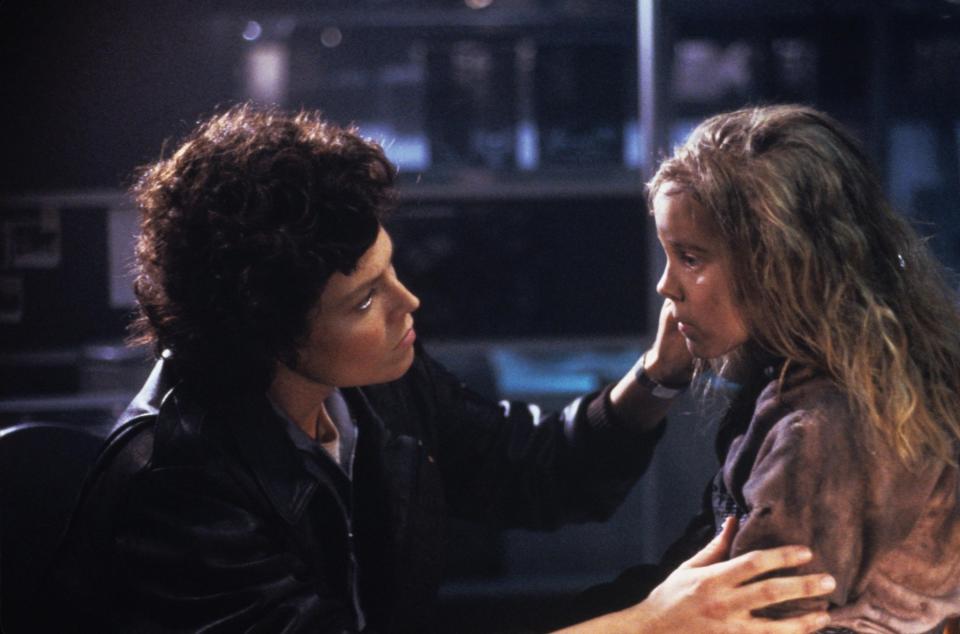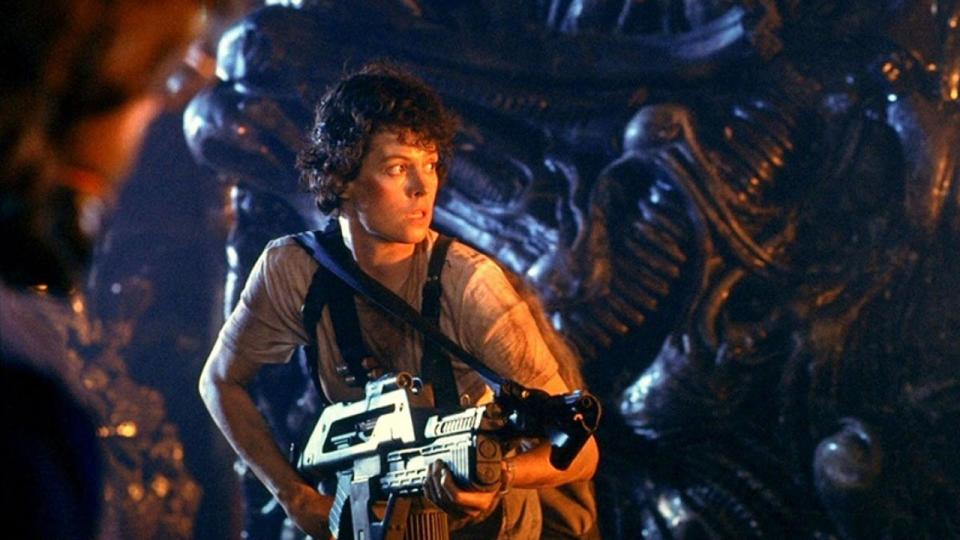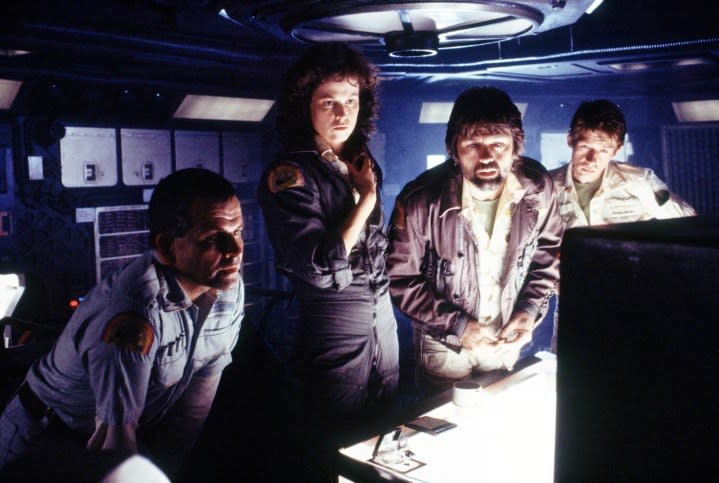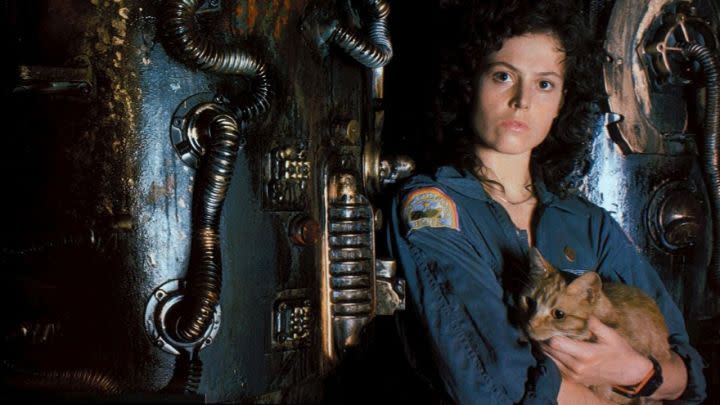Aliens is overrated. Here’s why the James Cameron sequel fails to live up to Alien
This article contains affiliate links; if you click such a link and make a purchase, Digital Trends and Yahoo Inc. may earn a commission.

Time has been kind to Aliens, James Cameron’s 1986 sequel to 1979’s Alien. Such varied publications as Slant Magazine, Empire, and RogerEbert.com have hotly declared that the film exceeds its predecessor, and its influence as an action thriller continues, all these decades later, to eclipse Alien’s legacy of creeping horror.
But in an era when more and more films resemble Aliens, it’s become clear that Alien is the superior entry, and indeed that Aliens represents, in its well-meaning way, a betrayal of the instincts that made the first movie great.
The film is duplicative of Alien as it attempts to honor it

Written hot off the success of another Cameron script, The Terminator (1984), Aliens was the answer to 20th Century Fox’s prayers when it went into production, representing the culmination of a years-long process to capitalize on the IP of the original film, which was directed by Ridley Scott and written by Dan O’Bannon and Ronald Shusett and had become a phenomenon thanks to its extraordinary atmospheric touches and creature design by H.R. Giger.
The creative issue to be broached was how the first film’s tension could be justified and replicated without seeming duplicative. In Alien, the crew of the interstellar cargo ship Nostromo touches down on an exomoon, LV-426, after receiving a distress call from another downed ship; the crew then encounters an alien species that embeds an embryo in the crew’s executive officer. The alien’s offspring, a “xenomorph,” bursts out of the executive officer’s chest (we’ve all seen the scene, if not the movie) and proceeds to pick off the Nostromo’s crew one by one.

Relying as Alien does on the slightly suspect premise that an ultra-powerful company, the Weyland-Yutani Corporation, would find the xenomorph useful as an object of study, it is perhaps not surprising that justifying a return to the outer world that houses the xenomorphs requires Cameron’s script to reiterate those circumstances. In the sequel, Ripley (Sigourney Weaver), the sole survivor of the xenomorph’s attack on the Nostromo, is rescued after floating in suspended animation for 57 years. A Weyland-Yutani rep (Paul Reiser) soon asks her to return to LV-426 to investigate a human colony there that’s gone silent. The company insists they’re not looking to bring a xenomorph back home at any cost, as was their deadly goal in the first film (they’re lying, naturally). Ripley and a team of marines zip off to LV-426 on a ship called the Sulaco, a name taken from the 1904 novel by Joseph Conrad, after which the Nostromo was named. (More recycling.)
There, to no one’s surprise, aliens (aha!) have overrun the colony, which, as contrasted with the cramped and claustrophobic Nostromo, is a vast series of floors and catwalks surrounding a nuclear reactor, creating a playing field that’s entirely too vast. Here, the franchise pivots: Alien gave us sweating and superb character actors, like Harry Dean Stanton and Ian Holm, moving slowly through oppressive passageways as the creature stalks them from the dark. Aliens gives us entertaining, if slightly empty, ass-kicking.
Aliens is schlocky where Alien is scary
In his review of the 1979 original, Gene Siskel rightly noted that “the final shape of the alien was the least scary of its forms.” As with its contemporary Jaws, Alien did its best work when hiding the alien itself from the audience’s sight. The power of suggestion, as the xenomorph crawls through the Nostromo’s ducts, dripping acidic blood and spit through the floorboards (a brilliant move, allowing little glimpses of the alien’s domain but not a prolonged look), is terrifying. Not so much the few extended shots of the full-grown xenomorph, played by the 6-foot-10 Bolaji Badejo, and looking uncannily like a 6-foot-10 man in a rubber suit.
ALIENS 1986 LET'S ROCK! SCENE MOVIE CLIP - 4K UHD HDR Custom 17/33
In Aliens, we get nothing but prolonged shots of those xenomorphs – not a loner this time, but a swarm. And the visual effects have not aged well. The creatures’ movement is inadequate and laggy – their reaction time seems delayed, and they seem to strike out randomly compared to the razor-precise movements of the xenomorph in Alien. Ripley and the Marines fight the aliens with machine guns and flamethrowers, but the fights themselves are not particularly interesting choreographically, aside from Ripley’s ultimate face-off with the alien queen. Much better are the film’s sequences, all too infrequent, when the Marines retreat to lick their wounds, allowing intimate character-based scenes with a terrific, underserved ensemble, including the late Bill Paxton.
Therein lies the rub – even in a fantastical monster movie, human stories are always more interesting than monster stories, and the more aliens, plural, the less time we get with the people we really care about. Further, Cameron’s pet themes – unity, humanity, exploration, and general badassery triumphing over evil – are baldly cliché as compared to the issues of paranoia and terror that John Carpenter covered in 1982’s The Thing (a clear influence) and Scott utilized so brilliantly in Alien.
Ripley’s character is watered down
The team of voyagers in an isolated research station facing off against alien powers is a story structure Cameron would use and abuse endlessly over the following decades. (See The Abyss and both Avatar films, for two.) He also inescapably swerves into juvenilia with his unrelenting inclusion of an adorable little kid our hero has to protect – in the case of Aliens, Newt (Carrie Henn), a little girl who is the sole survivor of the LV-426 xenomorph invasion and whom Ripley takes under her wing.
Ripley’s preoccupation with Newt, ostensibly for the purposes of exploring her character’s “maternal” instincts, is a far cry from the character’s vaunted feminist legacy, which is often attributed more to her balls-to-the-wall action sequences in Aliens than to her desperate, sweaty race for survival in Alien.

But Alien’s Ripley is a recognizable human woman, a person reacting to her environment rather than being a genre-saturated product of it. Mom-Ripley, in Aliens, is a mama bear cartoon whose single-minded attention to a bleary-eyed little kid serves to distract us from the more interesting question of why Ripley would return to face these nightmare creatures for any reason (a character beat only hinted at by Ripley’s nightmare at the beginning of the film that inspires her to accept Weyland-Yutani’s offer). When she growls at the alien queen, who has Newt in her clutches, “Get away from her, you bitch,” the audience is being goaded to cheer at an ostensibly action-hero moment that’s actually been condescendingly girl-powerified, down to the gendered insult.
The beginning of the end for the franchise
The most iconic image of Ripley in today’s media is Sigourney Weaver encased in her mech suit and ready to face off against the alien queen, a mega version of the regular xenomorph. But that Ripley – armed to the teeth and painted with the broadest brush available – was never the version her creators intended.
Alien is a story told in human proportion – down to the body horror that tells us the most frightening thing is not to be eaten from the outside in but from the inside out. It’s telling that Cameron wrapped Ripley in a giant metal robot suit rather than creating the circumstances that would allow her to outwit her opponent as her human self. Setting the stage for a series of critically lambasted sequels, Aliens is blockbusterdom personified – everything supersized, bloated, and riding on older, better ideas.
